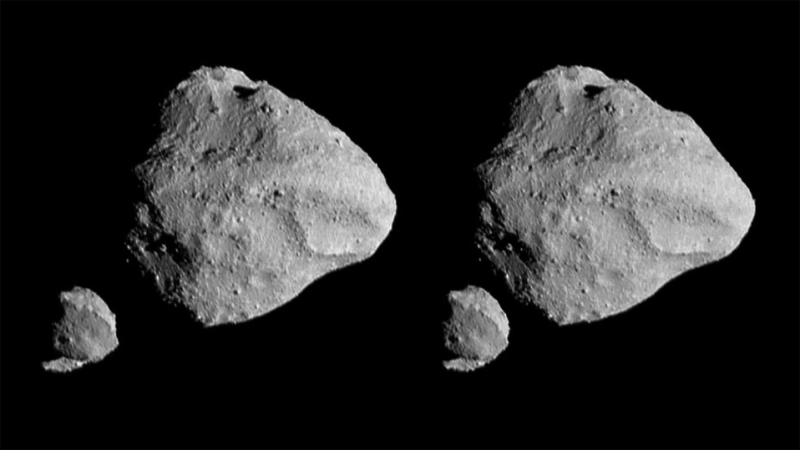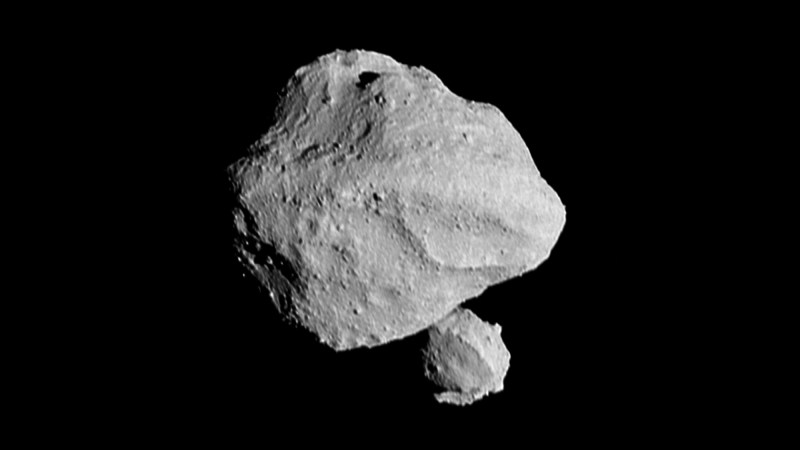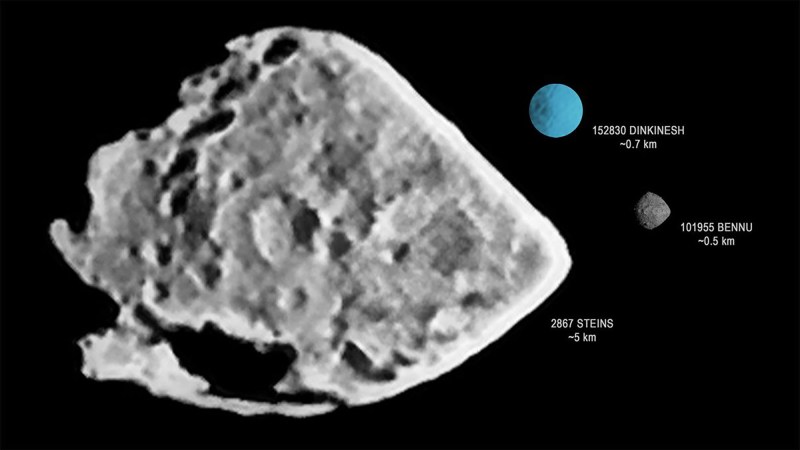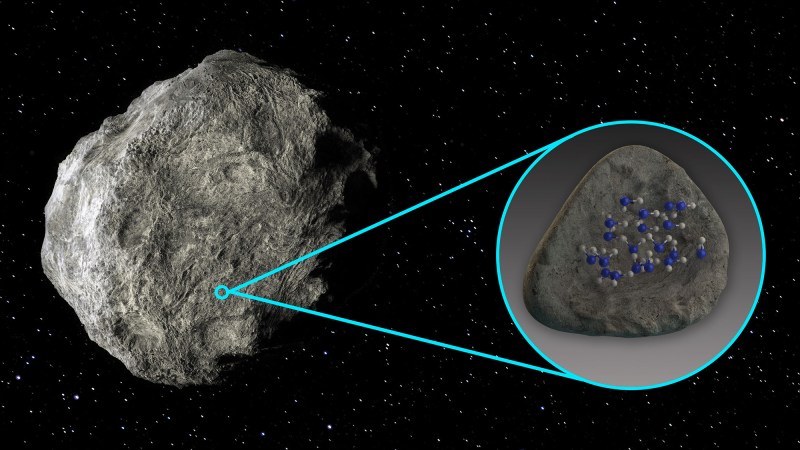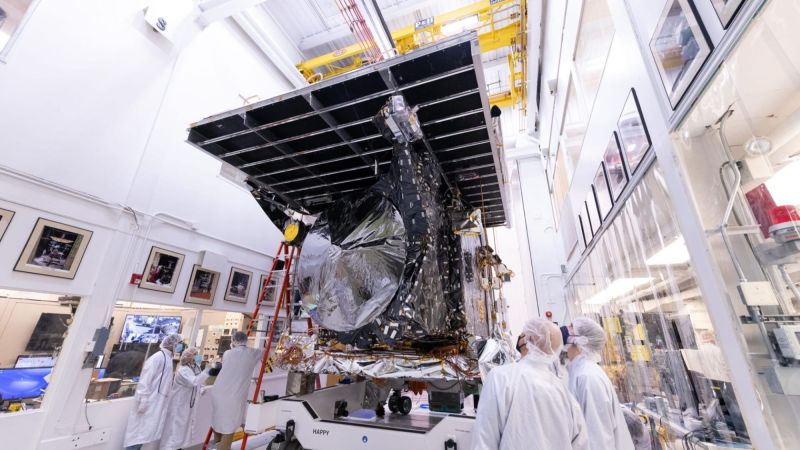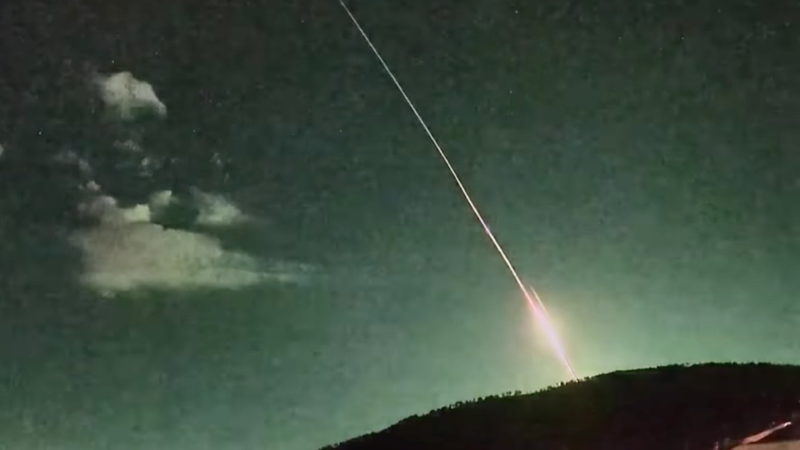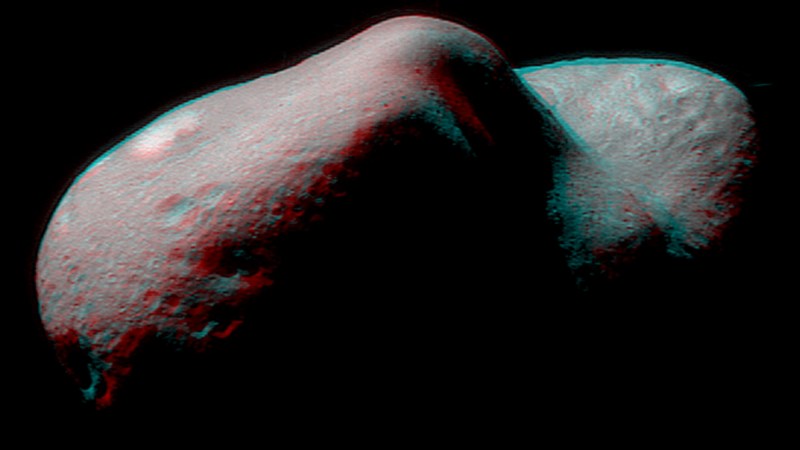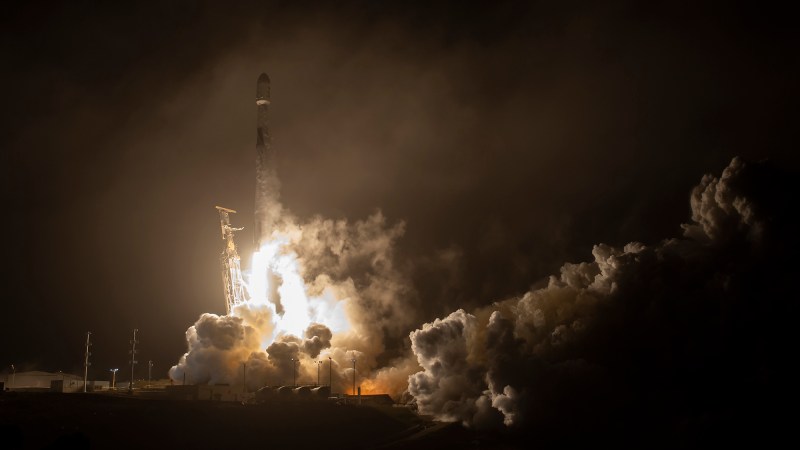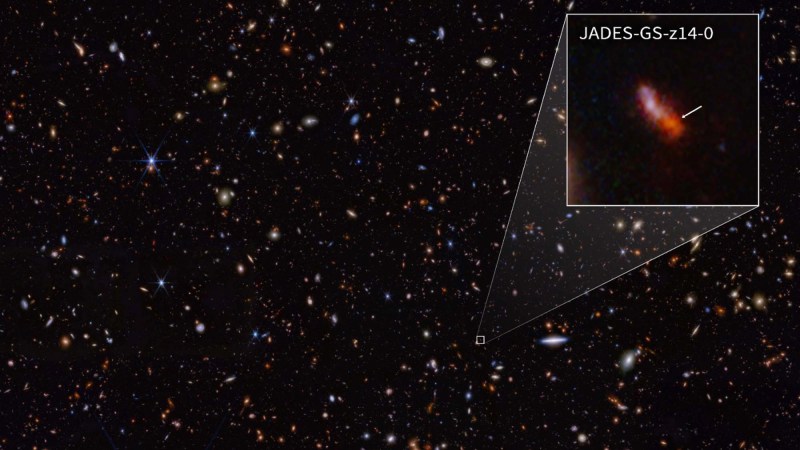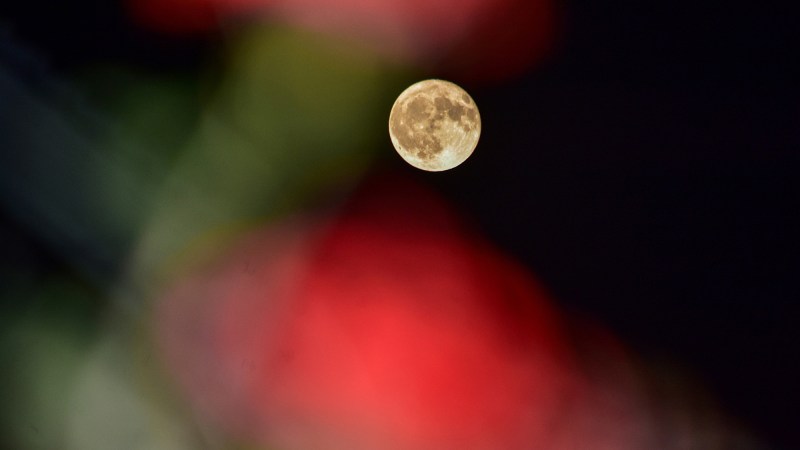When NASA scientists caught a glimpse of the first images taken by the instruments aboard the Lucy spacecraft of the asteroid Dinkinesh, they were surprised to see that it is orbited by a satellite asteroid. This satellite designated as Selam also has another surprise in store. Selam is not just one moon. It is a contact binary–two moons melded together–that was formed by debris that flew off of its parent asteroid. The findings are described in a study published May 29 in the journal Nature and this unusual arrangement challenges some existing theories about how asteroids and other celestial bodies are created over time.
“There’s a lot more complexity in these small bodies than we originally thought,” study co-author and University of Maryland planetary scientist Jessica Sunshine said in a statement. “With the additional observations taken by the spacecraft, we were able to better analyze features such as Dinkinesh’s rotation speed and Selam’s orbit pattern. We also have a better understanding of what materials they’re possibly made of, bringing us a step closer to learning just how terrestrial bodies are created.”
Dinkinesh–better known as–Dinky and its satellite Selam are the first two of 11 asteroids that Lucy plans to explore over its planned 12-year journey. It is a small asteroid located in the main asteroid belt between Mars and Jupiter. It does not pose any known threat to Earth.
[Related: ‘Lucy’s baby’ asteroid is only about 2 to 3 million years old.]
According to the study, the images taken by the Lucy spacecraft show a trough on Dinky where about 25 percent of the asteroid broke off from its main body. A ridge then formed after the asteroid’s structural failure and formed the contact binary scientists have now named Selam. The team theorized that Dinky’s fast spinning motion caused the asteroid to shed and eject rocky debris into order. Some of this debris may have come together to form Selam. Other portions of fragments likely rained back down on Dinky in boulders, which created the ridges that the spacecraft imaged.
“One of the things that’s critical to understanding how planets like Earth got here is understanding how objects behave when they hit each other, and to understand that we need to understand their strength,” study co-author and Southwest Research Institute planetary scientist Hal Levison said in a statement. “Basically, the planets formed when [smaller objects like asteroids] orbiting the Sun ran into each other. Whether objects break apart when they hit or stick together has a lot to do with their strength and internal structure.”
The team believes that Dinky likely had an internal strength, which allowed the space rock to maintain most of its form. How Dinky’s unusual dual moon system formed is still a mystery, but the findings provide a way for more comparative studies with similar celestial bodies.
“I’m personally very excited to compare the Didymos binary system with this one, especially as they appear to share many similarities such as size, general shape and possibly composition despite being in totally different parts of the solar system,” said Sunshine.
The Didymos binary system is the asteroid that was targeted by NASA’s asteroid-smashing DART mission in September 2022. The car-sized DART spacecraft successfully deflected Didymos’ small moon Dimorphos and altered ts orbit.
[Related: Water molecules detected on the surface of an asteroid in space for the first time.]
“The Didymos binary system is located in a near-Earth environment while the Dinkinesh system is located much farther away from Earth in the main asteroid belt,” said Sunshine. “They have very different features but we think they may have undergone similar processes to become what we know of them today.”
After skimming the inner edge of the main asteroid belt, Lucy will head back towards Earth for a gravity assist in December. This flyby will propel it back through the main asteroid belt. There, it is scheduled to observe asteroid Donaldjohanson in April 2025, before moving on to the Trojan asteroids in 2027.
“Our ultimate goal is to understand the formation of celestial bodies,” Sunshine said. “How do planets form? How was Earth formed? We know that big planets are formed by smaller bodies, so studying these little asteroids lets us see how materials behave and interact on a smaller scale. With Dinky and the other asteroids we’re flying by, we’re laying the groundwork for understanding how planets are made.”


